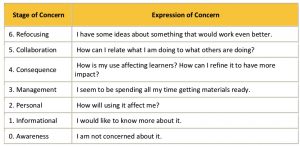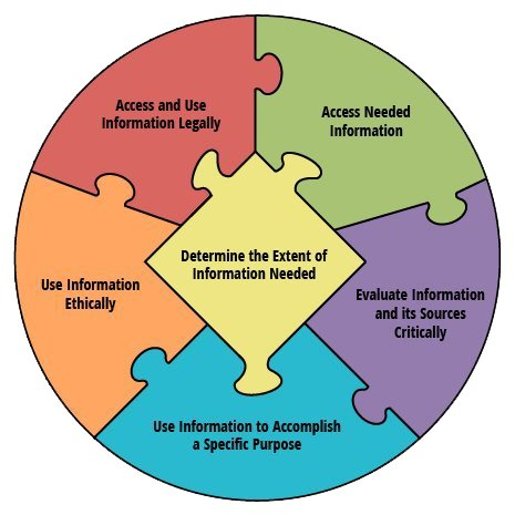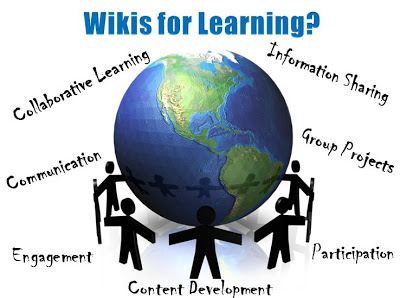In my last blog post, I wrote about how technology has become an essential part of our teaching and learning and how we must stop using technology just “for technology’s sake.” The nature of my last post has led to me to consider the theme of technology integration into my final project. Many teachers find themselves wanting to use technology but are unsure of how to go about it. They undoubtedly want what is best for their students but are either unaware of the potential of new available technology, or have no time, or perhaps drive, to learn about them. Teachers’ workloads continue to grow as new developments in pedagogy and technology are discovered. We need simple and effective ways to access new information and to share new findings. A digital artifact is undoubtedly the best way to offer this service to teachers.

My initial thought was to create a website that collects useful websites to share with teachers. In my readings throughout this course, I have discovered some excellent ideas and advice from many different websites that I thought others may be interested in reading. However, as I continued to reflect, I wondered how many teachers would actually take the time to click on the links to the websites to read articles or explore ideas.

Teachers typically have an incredibly long list of things to do, so unless there is something that directly affects them at that moment in time, they may put it on their list of things to do, only to forget about it later. I then considered creating a website, or blog, where I could feature particular ideas that I have gleaned from those websites myself. I again wondered if teachers would find the time to read them. I reflected upon where I, personally, get my ideas for the classroom. It occurred to me that many of my ideas come from pictures. This could be from Twitter, from a Google images search, or from Pinterest. I wondered if my website could be a collection of images on which you could click to access the link to the website for more information or a blog post in which I could explain and evaluate.
I got to thinking about my colleagues. There are some teachers who are very tech savvy and to whom many other staff members defer for IT help or for advice on how to implement a particular piece of equipment, such as the green screen. Teachers need support, however, for them to continue to use the technology. According to the Concerns-Based Adoption Model, supporting people in change is critical for learning to “take hold” (Louks-Horsley, 1996). This model identifies seven stages of concern (as shown in the table below) when implementing new ideas into their practice.

While there are many people on staff who are in the awareness stage of CBAM when it comes to technology integration, there are others who are nearing the collaborative stage. In order to benefit all staff, offering a site where they can not only access others’ ideas but share their own expertise would be a good idea. The best way to achieve this would be through a wiki. In this way, teachers can post their own ideas, findings, and collaboration efforts for their colleagues. This open sharing of ideas can open the door to some effective partnerships between teachers. “Learning often arises out of collaboration and wikis are good for this. The wiki format is ideal for sharing and getting feedback from team members. Some ways to use wikis to collaborate are:
- Finding group solutions to a problem
- Developing standards and allowing group comments
- Supporting tasks in the workflow from experts
- Creating a database of relevant stories from which others can learn
- Gathering requirements and feedback for a new product
- Showcasing projects, examples, design patterns (Malamed 2019).
I am not familiar with wikis other than Wikipedia, so I needed to do some research. There is a host of wikis available including MediaWiki, DokuWiki, TWiki, and TikiWiki, amongst others. The most popular are MediaWiki and DokuWiki. “The basic difference between these tools is their goal. MediaWiki is meant for large and complicated wikis and DokuWiki is meant for smaller, simpler wikis” (Feldman, 2020). Given that I have never used, much less created, a wiki, my initial thought was to begin small so DokuWiki seems like the better option, but this is something to be revisited when the scope of the project has been determined.

I am still not completely decided on the topic of technology integration, however. Another topic that I feel compelled to discuss is the importance of information literacy. With the prevalence of fake news and the plethora of unreliable sites online, information literacy is of critical importance. Students must know how to think critically about what they read or watch and to evaluate its accuracy. This is a skill that is not just important for research papers, but also for their lives outside of school. Teachers will undoubtedly all agree that information literacy is important, but may not know, even for themselves, how to check for authority and accuracy. Offering a website, blog, or wiki to share information or resources to help teachers to develop this skill with their students is also a possibility.
Finally, teacher collaboration, I feel, is the key to moving forward in education. Creating a digital space where teachers can share lesson plans and ideas with their colleagues is a tool from which many could benefit. Most teachers would like to collaborate but either cannot find the time, or are intimidated by sharing their work lest they be judged. Allowing them to simply post their ideas online so that others may get ideas and create their own plans would be a much less time-consuming and fearsome way to collaborate. Organizing the home page with links to each grade or course, as well as the use of categories and tags, would be great ways to streamline posts as they come in so that teachers can see at a glance what ideas their colleagues have implemented for their particular topic.
As teacher librarians, our goal is to assist not only students, but teachers as well. By providing an easy-to-use digital platform, teachers can choose to either view or contribute, depending on their comfort level, and can teach and learn from one another in a meaningful and professional way.
Bibliography:
Feldman, David. (2020). War of the Wikis. Civihosting. Retrieved from: https://civihosting.com/blog/dokuwiki-vs-mediawiki/
Louks-Horsley, Susan. (1996). Professional Development for Science Education: A Critical and Immediate Challenge. National Standards & the Science Curriculum. Dubuque, Iowa: Kendall/Hunt Publishing Co., 1996. Retrieved from: https://s3.wp.wsu.edu/uploads/sites/731/2015/07/CBAM-explanation.pdf
Malamed, Connie. (2019). Using Wikis for Learning and Collaboration. The eLearning Coach. Retrieved from: http://theelearningcoach.com/elearning2-0/using-wikis-for-elearning/
Featured image source: https://sites.google.com/site/smkpwiki/tests

 Follow
Follow






Abi
March 15, 2020 — 11:11 am
You have a lot of really great ideas here and I’m excited to see which one you decide to pursue. I really like the idea of creating a space where teachers can share ideas and collaborate. I definitely agree that teachers are often short on time and having a place where they can quickly post and search for ideas, depending on their comfort level, seems like it would be quite beneficial.
Laura Breckenridge (Sherriff)
March 15, 2020 — 11:19 pm
I like your idea of using a wiki because like you said, it is easy for teachers to find the information that is relevant to them. We have a something like this set up for staff to share PD. You cannot access this without a password but maybe I can send you a few screenshots if you are interested.
Melissa Hunt
March 16, 2020 — 3:23 am
I would absolutely love to see it! Thanks Laura!
Taryn Bennett
March 17, 2020 — 11:10 am
I think you’re off to a great start! And I fully agree with you that “Teachers typically have an incredibly long list of things to do, so unless there is something that directly affects them at that moment in time, they may put it on their list of things to do”. It seems to me that you are approaching this project very practically, and I could see it being very useful to you and your colleagues! I have never made a Wiki myself, so I’m curious how that will work out for you on your journey. Good luck!
Darcy
March 17, 2020 — 2:12 pm
You have a very strong idea for your final project. I appreciate the way that in embeds many of the key learnings from this course. It demonstrates the power of a PLN. supports teachers, connects people and curates ideas and resources. I am curious to see it all come together. If creating a Wiki ends up being daunting you could explore using a tool like Padlet for this.